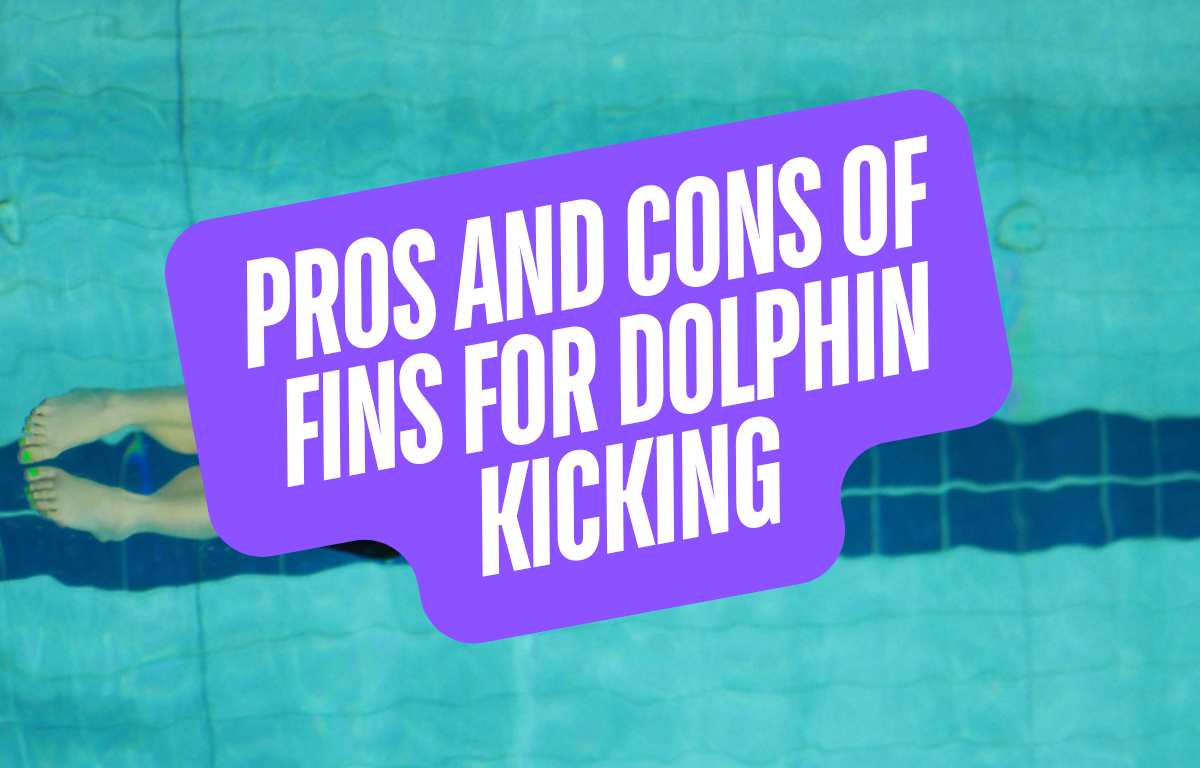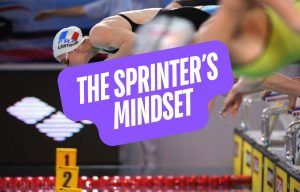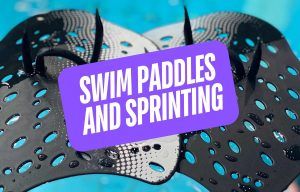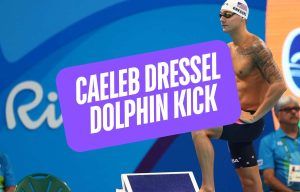Swim fins are fun, they are fast, and they are explosive. They also change kick kinematics and can quickly become a crutch. Here’s the elite-minded dolphin kicker’s guide to training with fins.
Fins are pound-for-pound the funnest piece of swim gear at the end of the lane.
Especially when it comes to improving our underwater dolphin kick.
With each kick, we explode through the water at speeds that make us feel like we really know what we are doing. Olympics, here we come!
But here’s the rub: are your fins actually helping your underwater dolphin kick or are they just giving you a false sense of speed and even holding you back from improvement?
Like any training tool in the water, fins can make you better or keep you kicking in place. But by using them correctly, you can build endurance, power, and mobility in your UDK while also balancing them with fin-less kicking to develop speed for race day.
Here’s the deal on when to slap those fins on and they should stay in your mesh bag.
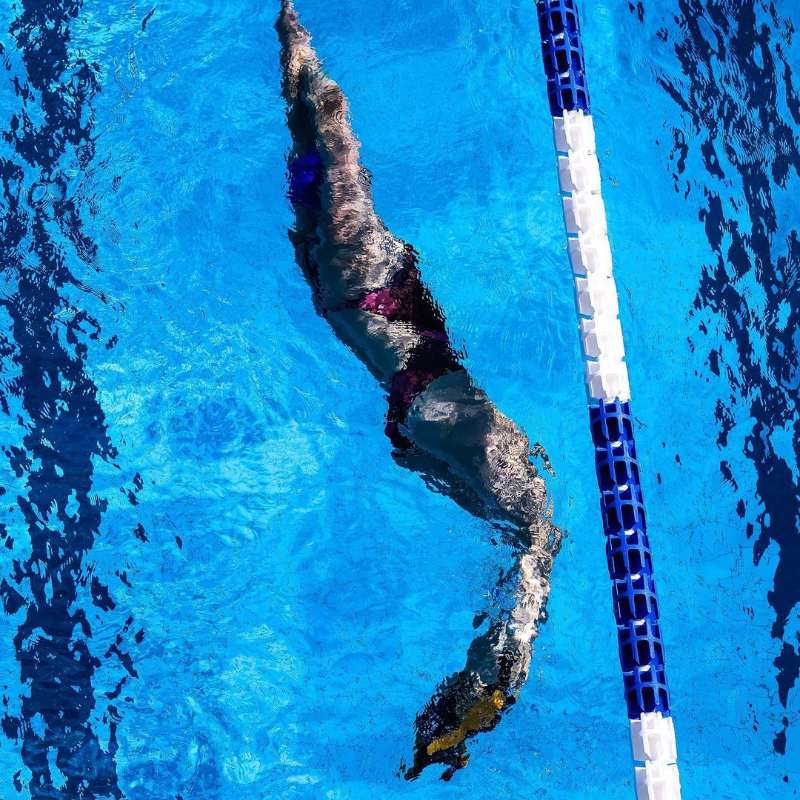
Fins + Dolphin Kicking – The Pros:
- Good for general endurance work. You can kick further, farther, and faster.
- Larger surface area helps you “feel” both phases of the kick better. This is particularly important for the upkick phase, which most swimmers sleep on.
- Improving strength in kick-specific muscles. This includes the calves, quads, and the stabilizers in the hips, knees, and ankles.
- Encouraging more undulation. Swim fins–monofins in particular–improve undulation when dolphin kicking, bringing us closer to more efficient aquatic locomotion.
- Gently stretch the ankles for more range of motion. Flexible ankles are fast ankles.
- Fun! Going fast is fun.
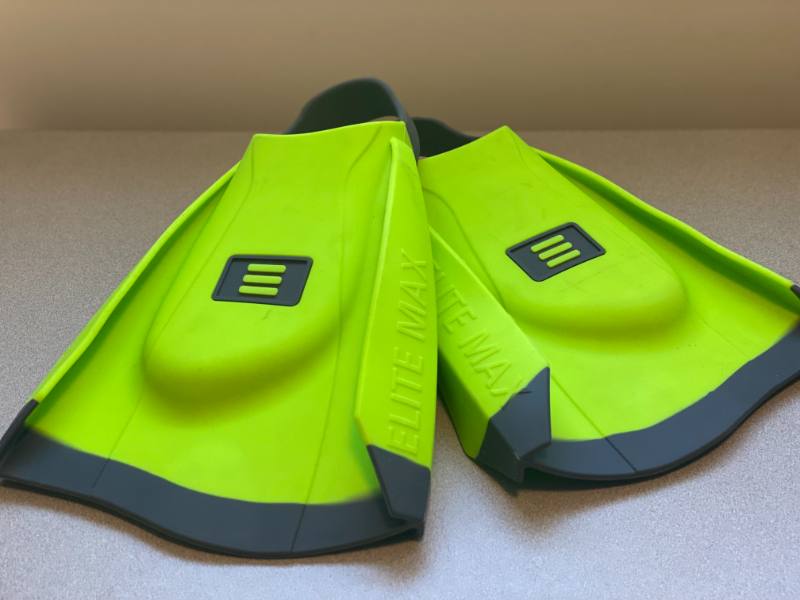
Fins + Dolphin Kicking – The Cons:
- Can become a crutch if you don’t kick enough without them. Your technique might look great and feel fast with fins, but fall apart when you take them off.
- Fins make kicking easier. Energy cost when using fins goes down significantly. One study with swimmers saw 50-60% less energy being used when swimmers kicked with fins on (Zamparo et al., 2006).
- They change your natural kicking technique. Increased surface area changes the kinematics of the kick.
- The increased speeds actually leads to a narrower kick amplitude as more speed = more drag, and the legs naturally self-organize to use a narrower kick amplitude.
- Slower frequency. The number of times you kick per second (kick tempo/frequency) also goes down significantly with all the added surface area on the fins (De Matos et al., 2023).
When using fins, the kick is faster, easier, longer, and uses a slower frequency. In many ways, you are training a different kick from the one you are trying to develop for competition.
So use them smartly. Here are some suggestions:
When to use them:
- General endurance sets (e.g. 6×200 dolphin kick on back, arms at side, with fins)
- Technique-focused kicking – doing fish kicking, kicking on your back, kicking at different speeds to test and better highlight undulation and a stronger upkick
- Mixing up your dolphin kick training to keep things spicy and engaging
When to ditch ‘em:
- Maximal kicking work where you want to train your race-day kick
- Power sets (using resistance tools like a chute, DragSox, etc.) where you want to build highly specific strength and power in your kick
Like any kind of swim gear in the water, fins can be used as a tool… or a crutch. Use your favorite set of fins like a pro, and your underwater dolphin kick will thank you.
Happy kicking!
The Ultimate Guide to a Faster Underwater Dolphin Kick
Want help leveling up your underwater dolphin kick? The Dolphin Kick Manual is the ultimate resource for helping swimmers and swim coaches develop a world-class underwater dolphin kick.

The Dolphin Kick Manual is a beastly 240+ pages of actionable insights and research into elite dolphin kicking technique and performance. It details everything from mastering undulation to vortex recapturing to structuring a dryland program for dolphin kicking success.
It combines evidence-based insights with a collection of 20 ready-to-go sets and a 6-week Action Plan to help swimmers set a course for dolphin kicking success.
Train smarter and kick faster.

